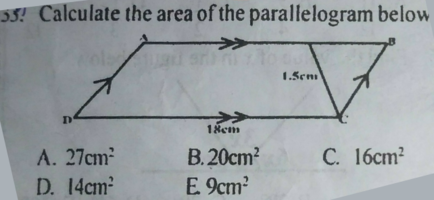Steven G
Elite Member
- Joined
- Dec 30, 2014
- Messages
- 14,560
But YOU don't know that. You stopped in the middle of the problem because someone told you that you can't solve the problem and then you have an attitude.Welcome back!
It doesn't help me in any way as long as the area of the parallelogram cannot be found with the given information.
You, not some helper on the former, must conclude on your own that the problem can't be done. You had so much information that you failed to label. You need to understand that your diagram was unfinished.

